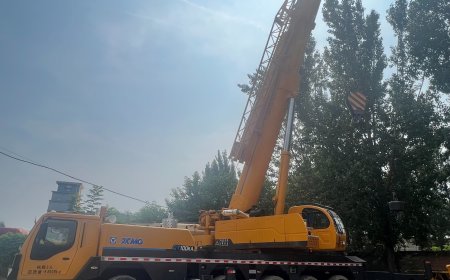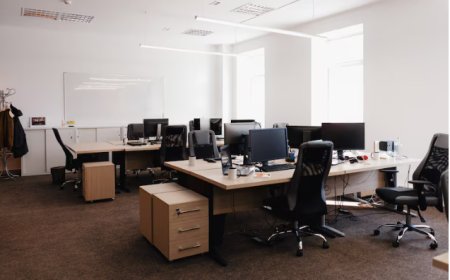Benefits of Using a Free Standing Table in Office Spaces
Free standing tables are gaining popularity in contemporary office environments due to their versatility and flexibility. Unlike fixed desks, office table can be easily moved and rearranged to suit changing office layouts or specific task requirements. This adaptability makes them ideal for collaborative spaces, hot-desking arrangements, and multipurpose rooms. Furthermore, free standing tables offer ergonomic benefits by allowing users to customize their positioning, height, and orientation, which reduces strain and improves posture during long working hours. These tables also support diverse work styles, from individual tasks to group discussions, making them an excellent investment for dynamic office settings.
How an Office Table Influences Workplace Efficiency
The design and functionality of an office table directly affect workplace efficiency. A cluttered or improperly sized table can hinder productivity by limiting workspace and causing discomfort. On the other hand, a well-designed office table provides ample surface area for essential tools such as computers, documents, and stationery, enabling workers to stay organized and focused. Features such as cable management, adjustable heights, and integrated storage further enhance usability. The surface material also plays a role; durable, easy-to-clean finishes contribute to a tidy and professional atmosphere. Therefore, choosing the right office table goes beyond aestheticsits about creating a workspace that supports efficient workflow and reduces distractions.
Factors to Consider When Selecting an Office Table
Several factors should guide the selection of an office table to ensure it meets the specific needs of users and the overall office environment. First, the size of the table must be appropriate for the available space and the tasks performed. A free standing table is particularly beneficial in small or shared offices where flexibility is paramount. Second, the height and ergonomics of the table are critical for preventing discomfort and health issues such as back pain or repetitive strain injuries. Adjustable tables or those designed with ergonomic standards in mind help users maintain proper posture. Third, the material and finish of the table affect durability, maintenance, and appearance. Lastly, additional features such as storage compartments, cable routing, and modularity enhance functionality and convenience, making daily work easier and more pleasant.
The Role of Office Table Design in Modern Workspaces
Office table design has evolved significantly, influenced by changing work habits, technological advancements, and aesthetic trends. Modern workspaces emphasize open layouts, collaboration, and flexibility, all of which are supported by innovative office table designs. Minimalist tables with clean lines and neutral colors blend seamlessly into various office decors, while modular tables offer customization to fit unique requirements. The trend toward standing desks and free standing tables also reflects a growing awareness of health and wellness at work. These designs encourage movement and reduce sedentary behavior, which are essential for physical and mental well-being. Integrating technology-friendly features such as built-in USB ports and wireless charging further enhances the modern office tables role as a productivity tool.
Enhancing Collaboration with Free Standing Tables
Collaboration is a key element of successful teams, and free standing tables facilitate this by offering flexible and accessible surfaces for group work. Unlike fixed desks, free standing tables can be arranged in various configurations to accommodate meetings, brainstorming sessions, or informal discussions. This adaptability helps create inclusive environments where team members can easily share ideas and resources. Additionally, free standing tables can serve as temporary workstations during busy periods or for special projects, maximizing office space efficiency. By promoting interaction and teamwork, these tables contribute to a culture of innovation and collective problem-solving that drives business success.
Space Optimization Through Versatile Office Tables
Efficient use of office space is a common challenge, especially in urban environments where real estate costs are high. Free standing tables offer a practical solution by allowing flexible space arrangements without permanent fixtures. This flexibility enables offices to reconfigure layouts quickly in response to changing needs, such as expanding teams or new work processes. Multi-purpose tables that serve as both individual workstations and meeting areas reduce the need for additional furniture, saving space and costs. Moreover, compact designs and nesting features help keep offices organized and clutter-free. By choosing versatile office tables, companies can optimize their workspace to support both productivity and comfort without compromising on design.
The Impact of Material Choice on Office Table Durability and Style
The materials used in an office table affect not only its durability but also its visual appeal and maintenance requirements. Common materials include wood, metal, glass, and engineered composites, each with unique characteristics. Wooden tables bring warmth and a classic look but require proper care to avoid scratches and stains. Metal frames add strength and modernity, often combined with wooden or laminate surfaces for a balanced design. Glass tops offer a sleek, contemporary appearance but may need frequent cleaning to maintain clarity. Laminate and engineered surfaces provide affordability and resistance to wear and tear, making them ideal for high-traffic offices. Selecting the right material aligns the office table with the companys brand image and daily use demands.
Integrating Technology with Office Tables for a Smart Workspace
As digital tools become integral to work processes, office tables must accommodate technology seamlessly. Modern office tables often include features such as built-in power outlets, USB ports, wireless charging pads, and cable management systems. These integrations reduce clutter and keep devices powered, allowing employees to focus on tasks without interruption. Free standing tables designed with technology in mind support remote work, video conferencing, and collaborative software usage by providing flexible yet organized setups. Smart office tables that adjust height electronically or track usage statistics further enhance comfort and efficiency. Incorporating technology into office tables reflects a forward-thinking approach that meets the needs of todays digital workforce.
Conclusion: Choosing the Right Office Table for Your Workspace
In conclusion, selecting the right office table is essential for creating an efficient, comfortable, and adaptable workspace. Whether opting for a traditional fixed desk or a flexible free standing table, businesses must consider factors such as size, ergonomics, design, material, and technological compatibility to support their employees productivity and well-being. Free standing tables offer exceptional versatility that aligns with the dynamic nature of modern offices, encouraging collaboration and space optimization. By investing in high-quality, thoughtfully designed office tables, companies can foster a positive work environment that promotes creativity, health, and success. When it comes to balancing function and style, "office table" remains a trusted choice for professionals seeking to enhance their workspace experience.


























